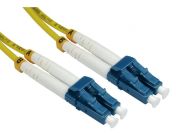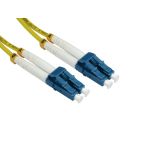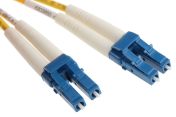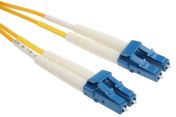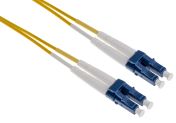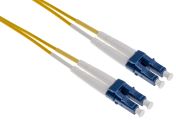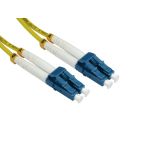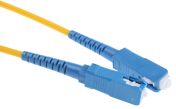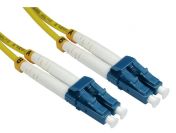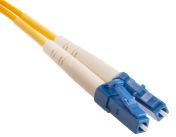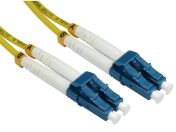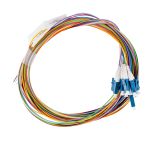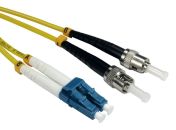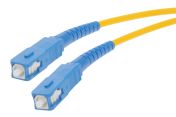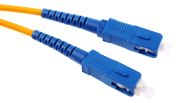Single Mode Fibre Optic
Single-mode fibre optics (SMF) is a type of optical fibre that is designed to carry a single mode of light or electromagnetic wave. It is used in telecommunications, data transmission, and high-speed internet connections where high bandwidth and low signal attenuation over long distances are required. Here are some key characteristics and features of single-mode fibre optics:
- Core Diameter: Single-mode fibres have a very small core diameter, typically around 8 to 10 micrometres (µm). This small core size allows only one mode or path for light to travel through, which minimizes signal dispersion and distortion.
- Light Source: To efficiently transmit signals through single-mode fibre, a laser diode is often used as the light source. The coherent and monochromatic properties of laser light are well-suited for single-mode transmission.
- Bandwidth and Data Rates: Single-mode fibre can support very high bandwidth and data rates. It is commonly used in applications requiring gigabit and terabit data transmission, making it ideal for long-haul communications, such as undersea cables and high-speed internet connections.
- Distance: SMF can transmit signals over long distances without significant signal loss. It is capable of transmitting signals for tens of kilometres or more without the need for signal regeneration.
- Dispersion: Single-mode fibre has lower dispersion, which means that different wavelengths of light travel at nearly the same speed, resulting in minimal signal distortion.
- Connectors: Connectors used with single-mode fibre optics need to be highly precise to ensure minimal signal loss. Common connectors include SC (Subscriber Connector), LC (Lucent Connector), and ST (Straight Tip).
- Applications: Single-mode fibre optics are widely used in various applications, including long-distance telecommunications, data centres, high-speed internet backbones, cable television (CATV), and optical sensors.
- Colour Coding: Single-mode fibre is often colour-coded with a yellow outer jacket, although other colour codings may be used in different contexts and regions.
- Mode Field Diameter: The mode field diameter of single-mode fiber is a measure of the spatial distribution of the optical mode in the fibre core. It is smaller than that of multi-mode fibre, ensuring that only one mode is transmitted.
- Cost: Single-mode fibre is generally more expensive to install and terminate than multi-mode fibre due to the precision required for its connectors and the cost of the laser-based transmitters.
Popular Searches
Related links
- A Complete Guide to Fibre Optic Cables
- Fibre Testers
- RS PRO LC to LC Duplex Single Mode OS1 Fibre Optic Cable Yellow, 2m
- Fibre Optic Connectors
- How to Test a Fibre Optic Cable
- RS PRO OM4 Multi Mode OM4 Fibre Optic Cable 200m
- Fibre SFP Transceiver Modules
- Siemens 6ES7193 Series Adapter for Use with Single Mode Fiber Optic Cable
